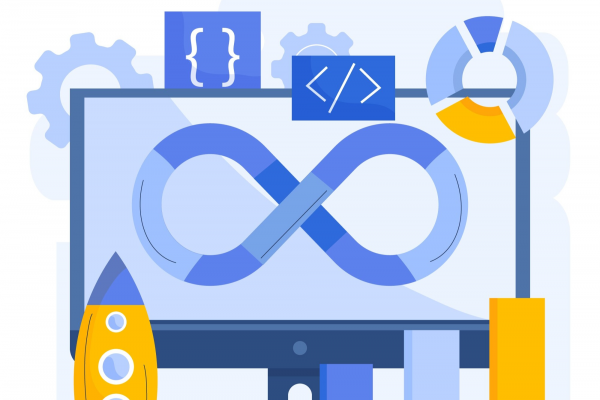In the fast-paced world of business, staying competitive means leveraging technology to its fullest potential. Among the myriad of tech solutions available, Software as a Service (SaaS) stands out as a game-changer for enterprises across various industries. SaaS offers a plethora of benefits that empower organizations to streamline operations, enhance productivity, and drive growth. In this comprehensive exploration, we delve into the top 10 advantages of SaaS for enterprises, backed by relevant statistics and insights.
Cost Efficiency: One of the primary attractions of SaaS is its cost-effective nature. Unlike traditional software deployment models that require hefty upfront investments in hardware and software licenses, SaaS operates on a subscription basis. This model enables enterprises to access cutting-edge software solutions without breaking the bank, making it particularly appealing for startups and small to medium-sized businesses (SMBs).
Scalability: The scalability of SaaS solutions is unparalleled, allowing enterprises to effortlessly adjust their software usage based on fluctuating demands. As businesses grow or experience seasonal spikes in activity, they can easily scale up or down their SaaS subscriptions. This scalability fosters agility and flexibility, enabling organizations to adapt to changing market dynamics swiftly. According to Statista, the global SaaS market is projected to reach $232 billion by 2024, underscoring its scalability and widespread adoption.
Accessibility and Convenience: With SaaS, software applications are hosted in the cloud and accessible via the internet, eliminating the need for on-premises installation and maintenance. This accessibility empowers employees to access critical business tools anytime, anywhere, and from any device with an internet connection. Consequently, remote work becomes seamless, driving collaboration and productivity. According to a report by Forbes, a staggering 98% of workers expressed the desire to work remotely, at least part of the time.
Rapid Deployment: Traditional software implementations can be time-consuming and complex, requiring extensive setup and configuration. In contrast, SaaS solutions boast rapid deployment times, allowing enterprises to go live with new applications in a fraction of the time. This accelerated deployment reduces time-to-market for products and services, giving businesses a competitive edge.
Automatic Updates and Maintenance: SaaS providers handle all software updates and maintenance tasks, relieving enterprises of the burden of managing these processes internally. This ensures that businesses always have access to the latest features, enhancements, and security patches without any downtime. SaaS adoption can significantly reduce costs by optimizing headcount and makes the balance sheet more asset-light.
Enhanced Security: Security is a paramount concern for enterprises, especially in an era of escalating cyber threats. SaaS vendors invest heavily in state-of-the-art security measures to protect their cloud-based platforms and data centers. These measures often exceed the capabilities of on-premises solutions, providing enterprises with peace of mind regarding data privacy and compliance.
Improved Collaboration: Collaboration lies at the heart of modern business operations, and SaaS facilitates seamless collaboration among teams, departments, and even external stakeholders. By centralizing data and applications in the cloud, SaaS enables real-time collaboration on documents, projects, and workflows. This fosters synergy and innovation, driving better decision-making and outcomes. According to a report by Statista, Worldwide market revenues from collaboration software reached over 16.1 billion in 2022 and is forecast to keep increasing, reaching about 52.9 billion U.S. dollars in 2032.
Analytics and Insights: Data-driven decision-making is a cornerstone of enterprise success, and SaaS platforms offer robust analytics and reporting capabilities to unlock actionable insights. By leveraging advanced analytics tools integrated into SaaS applications, enterprises can gain deeper visibility into their operations, customer behavior, and market trends. This empowers informed decision-making and enables organizations to identify opportunities for optimization and growth. The respondents of a survey by Statista, demonstrated a 12 percent increase in implementing data-driven decision-making within their global organizations when compared to 2018.
Customization and Integration: While SaaS solutions offer out-of-the-box functionality, they also provide extensive customization options to tailor the software to specific business requirements. Additionally, SaaS platforms are designed to integrate seamlessly with other software applications and systems, enabling enterprises to create cohesive ecosystems that streamline workflows and data exchange. This interoperability enhances efficiency and productivity across the organization, driving holistic digital transformation.
Global Reach and Expansion: In today’s interconnected world, businesses are increasingly expanding their operations globally to tap into new markets and opportunities. SaaS facilitates this expansion by providing a scalable and accessible platform that transcends geographical boundaries. With cloud-based SaaS solutions, enterprises can seamlessly serve customers and stakeholders worldwide, overcoming logistical challenges and localization barriers.
CONCLUSION
Software as a Service (SaaS) offers a myriad of benefits that empower enterprises to thrive in a digital-first world. From cost efficiency and scalability to enhanced security and global reach, the advantages of SaaS are undeniable. By embracing STL Digital’s SaaS Services, enterprises can streamline operations, drive innovation, and stay ahead of the competition in an ever-evolving business landscape. As the SaaS market continues to grow and evolve, businesses that harness its transformative potential will undoubtedly emerge as industry leaders.



